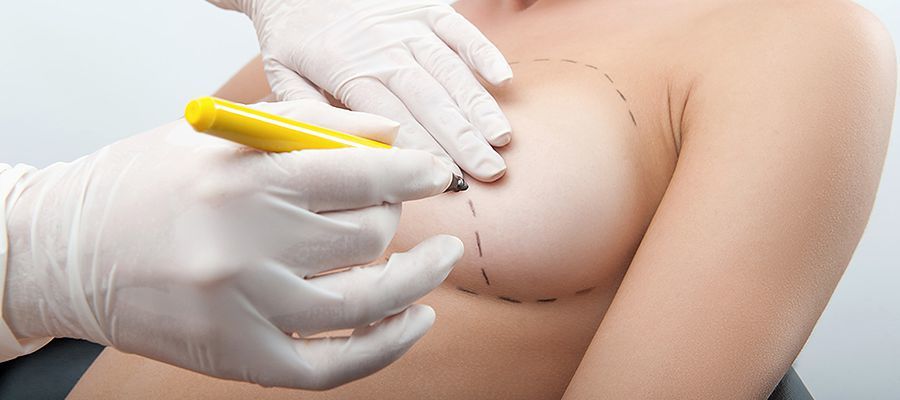Breast Reduction Surgery

Breast Reduction Surgery
Breast reduction surgery, also known as reduction mammoplasty, is the process of removing excess fat, tissue and skin from the breasts, and reducing the size of the breast. The aim of the surgery is to reduce the disturbingly large size of the breast, and to reshape it proportional to the entire body eliminating any physical discomfort.
This procedure has the benefit of relieving the physical and emotional burden of excessively large breasts, as well as increasing self-confidence by improving body proportions.
In which cases can breast reduction surgery be considered?
- If your breasts are too large for the size of your body
- If your breasts cause back, shoulder or neck pain and skin irritation
- If you have trouble breathing
- If you have trouble finding clothes or bras that fit your size
- If one breast is much larger compared to the other
- If you are unhappy about your breast size and its appearance
If you experience one or more of the problems mentioned above, if your overall health is good and you have realistic expectations, if you feel ready and have a positive attitude about this procedure, you can be an excellent candidate for this procedure.
 Pros
Pros
Your breasts will be in better proportion to your body.
Neck, back and shoulder pains will be relieved.
Your clothes will fit better.
Your self-confidence will increase as you will be happy with your reflection in the mirror.
Cons
There may be decreased sensation in the nipples and areolas.
Your breasts and nipples may look a little irregular.
Breastfeeding can be a problem.
How is breast reduction performed?
Breast reduction surgery, which usually takes three to five hours, is performed under general anesthesia in a hospital or surgical center. The procedure includes removing excess breast tissue, fat and skin, bringing the nipple and areola to their anatomical position, and reducing the areolas if there is deformation in size.
Before the surgery, the surgeon performs measurements for incisions, and marks the breasts of the patient in order to determine their locations. This is because the breasts change shape when lying on back on the surgery table.
It is performed using four different incision techniques. The incision technique depends on the size of the breasts, the extent of sagging, and the location of the nipple-areola.
A circular incision, which is also known as a periareolar incision, is the incision made only around the margins of the areola.
A vertical incision, which is also known as a lollipop cut, is the incision made around the areola, and vertically from the nipple to the breast crease.
Inverted T incision, which is also known as anchor incision, is the incision around the margins of the areola, which is joined by a third incision from the nipple to the breast crease, perpendicular to the thoracic crease.
A horizontal incision is an incision made around the margins of the areola and along the chest crease.
A drain is placed on the breasts to collect excess fluid during the surgery. At the end of the surgical procedure, the incisions are sutured by starting from the deep tissue layers and the skin, which is the last superficial layer.
How Long Does the Outcome Last?
There will be no deformation in the breasts if the patient does not gain or lose a lot of weight, or does not get pregnant. However, the effects of gravity and aging will cause the breasts to loosen and sag over time.
Risks
Serious risks are rare, and the post-operative satisfaction rate is high in breast reduction surgeries.
Yet, all surgical procedures have a certain degree of risk. Some of the possible complications of all surgical procedures include:
- Reaction to anesthesia
- Hematoma or seroma (accumulation of blood or fluid under the skin, which requires removal)
- Infection and bleeding
- Changes in skin sensation
- Scarring
- Allergic reactions
- Unsatisfactory results that may require additional procedures
- Blood clots in the legs or lungs
Process
- Following all the instructions given by your surgeon is very important for the healthy progress of your healing process (such as the use of a special bra after the surgery, incision care, use of medication/cream, etc.).
- The duration of stay in the hospital is 1 day unless there is a medical necessity.
- After being discharged, you will have post-operative follow-ups on the days to be determined by the surgeon.
- It may take a few days to return to your daily routine; however, if you are employed it is recommended to take a week off. If you have a physically active job that will especially strain your arms, it is recommended to take 2 weeks off.
- You may feel tightness and some pain in your incision area for a few days. It can be relieved with painkillers, and it only lasts for two to three days.
- You may need to be accompanied by a relative for a few days as you may feel tired and sensitive due to your surgery.
- Do not drive during the first 10 days.
- Heavy exercise and heavy lifting, including infants/children, should be avoided for one month after the procedure.
- Smoking reduces circulation, delays wound healing and significantly increases the likelihood of serious complications; therefore, you should discontinue smoking at least four weeks before and four weeks after your procedure.
- There is a possibility that you may experience an emotional reaction such as depression after the surgery. This is a possible situation.